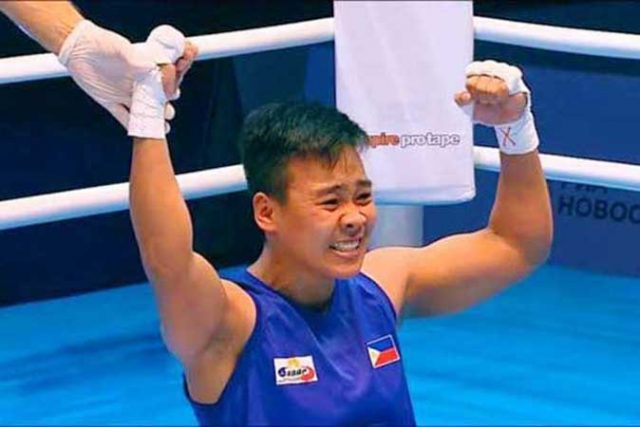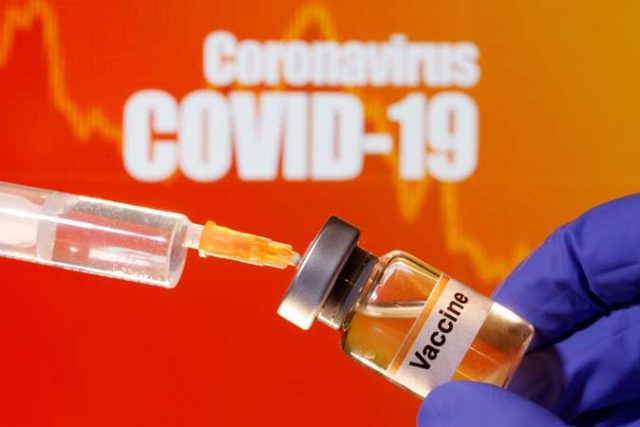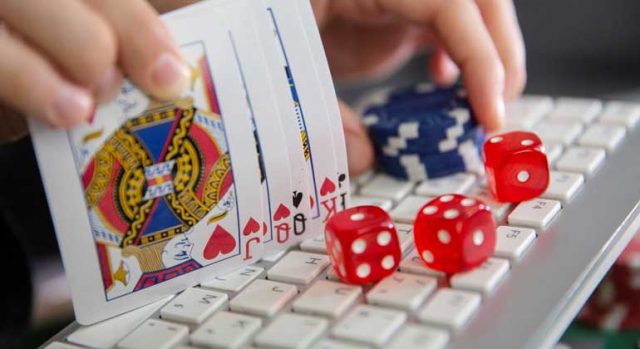Boxer Petecio fights for spot in next round

Gymnast Carlos Yulo through to vault final; taekwondo jin Kurt Barbosa exits
AFTER hurdling her first challenge at the Tokyo Olympic Games, Filipino women’s featherweight boxer Nesthy Petecio fights for a spot in the semifinals of her division on Monday at the Kokugikan Arena.
Twenty-nine-year-old Petecio, a gold medalist in the 2019 International Boxing Association (AIBA) Women’s World Boxing Championships, will take on former world champion and top seed in the 54 to 57-kg division Lin Yu-Ting of Chinese Taipei in their quarterfinal bout set for 12:39 p.m. (Philippine time).
Ms. Petecio bucked a slow start in her Round of 16 encounter with Marcelat Sakobi Matshu of Congo on Saturday to advance to the quarterfinals.
The Davao del Sur native picked up her game in the second and third rounds of the fight, turning to her lateral movements to create angles and land power blows to get the better of her opponent for the win.
She won by unanimous decision, 30-27, 30-27, 29-28, 30-27, 30-27.
Out to frustrate Ms. Petecio in her semifinal push is Ms. Lin, the women’s bantamweight champion in the 2018 World Championships in New Delhi, India, who a year later climbed to featherweight and finished third at the 2019 World Championships in Ulan-Ude, Russia, where Ms. Petecio was the champion in the division.
The Taiwanese, however, was the featherweight titlist in the same year in the Asian Championships, where Ms. Petecio only finished ninth.
Meanwhile, Ms. Petecio’s teammate Irish Magno was to begin her Olympic campaign on Sunday in the women’s flyweight division against Christine Ongare of Kenya.
In gymnastics, lone Filipino representative Carlos Yulo advanced to the final of the men’s vault event but unfortunately did not make the cut in his pet event floor exercise in the qualification phase on Saturday at the Ariake Gymnastics Centre.
The Manila native, who spent much of the last three years training in Japan, ended up with an average of 14.712 in the vault to finish sixth, well inside of the top eight needed to advance to the final on Aug. 2 (5:30 p.m., PST).
Mr. Yulo, however, saw his bid in the floor exercise quashed after finishing with a score of 13.566 in the event, good only for 44th place, doomed by errors early in his routine.
He, too, failed to advance in the individual all-around event where only the top 24 earned spots in the final. The 21-year-old finished at 47th.
In other apparatuses, Mr. Yulo finished 69th in the pommel horse, 24th in rings, 55th in parallel bars and 63rd horizontal bar.
After qualification, Mr. Yulo expressed his disappointment over the outcome of his performance but is looking forward to doing better in the vault final.
Incidentally, it was reported that Mr. Yulo suffered a hip injury two weeks before the start of the Tokyo Olympics on July 23.
TAEKWONDO
Meanwhile, taekwondo jin Kurt Barbosa exited earlier than hoped after falling to Korean top seed Jun Jang in the opening round of the -58kg division on Saturday.
He lost, 6-26, relegating him to the repechage later in the day.
Unfortunately for Mr. Barbosa, his hopes of at least salvaging a bronze medal through the repechage were dashed after Mr. Jun suffered an upset loss, 19-25, in the semifinals at the hands of Tunisia’s Mohamed Khalil Jendoubi. Had the Korean made it to the finals, Mr. Barbosa would have seen action still and vie for a podium finish.
Despite falling short in his first-ever Olympics, Mr. Barbosa, 22, was grateful for the opportunity given to him and vowed to come back stronger and compete in future competitions, including the next edition of the quadrennial Olympic Games in Paris.
Also on Monday, 2016 silver medal-winning weightlifter Hidilyn Diaz and debuting skateboarder Margielyn Didal make a go for the gold in their respective sports. — Michael Angelo S. Murillo






